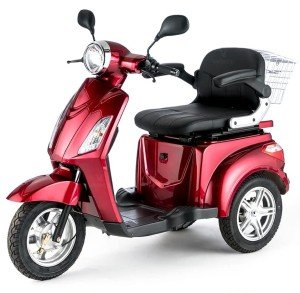
Veleco Mobility Scooter Uk
Eine Bewertung hinzufügen FolgeÜbersicht
-
Gründungsdatum Dezember 22, 1975
-
Sektoren Bildungsausbildung
-
Gepostete Jobs 0
-
Gesehen 22
Beschreibung des Unternehmens
Guide To Velco: The Intermediate Guide For Velco
Velcro: A Revolutionary Fastening Solution
Introduction
Velcro, a name that has nearly ended up being associated with hook-and-loop fasteners, has changed the way we consider attaching materials. Frequently a staple in different markets and households, Velcro provides a simple yet efficient solution to protect items without the requirement for buckles, buttons, or zippers. This article dives into the origins, mechanisms, applications, and benefits of Velcro as well as dealing with some frequently asked concerns.

The Origins of Velcro
Velcro was developed in the late 1940s by Swiss engineer George de Mestral. After a hunting trip in the Alps, Mestral ended up being amazed by the burrs that stuck to his pet’s fur. Upon closer evaluation, he understood they functioned through a system of tiny hooks that captured anything with a loop, including fabric and fur. Acknowledging the capacity of this natural fastening system, Mestral embarked on a journey to recreate it in an artificial form. By 1955, he had actually patented his creation, branding it „Velcro,“ a combination of the French words „velours“ (velvet) and „crochet“ (hook).
How Velcro Works
Velcro consists of 2 different pieces: a hook side and a loop side. These 2 components interlock when pushed together, creating a strong bond that can be easily released with a basic pull. The functioning of Velcro can be broken down into these main components:
| Component | Description |
|---|---|
| Hook Side | This side features tiny hooks that capture and keep loops. |
| Loop Side | This side consists of soft loops created to accept hooks when contacted. |
System of Fastening
- Interlocking: The hooks on one side capture the loops on the other, developing a physical interlock.
- Strength: The variety of hooks and loops ensures a significant holding strength, making it suitable for velco both light and sturdy applications.
- Alleviate of Use: Velcro can be disengaged and re-engaged various times without losing its efficiency, setting it apart from more standard fastening techniques.
Applications of Velcro
Velcro has discovered application across a myriad of sectors, consisting of:
-
Fashion Industry
- Sportswear
- Shoes (specifically children’s shoes)
- Accessories (belts, bags)
-
Medical Field
- Orthopedic gadgets
- Bandages
- Prosthetics
-
Automotive and Aerospace
- Seat covers
- Interior linings
- Security equipment
-
Home Items
- Drapes
- Carpets
- Organizers
-
Industrial Use
- Cabling
- Equipment fastening
- Tools storage
Advantages of Velcro
The appeal of Velcro can be credited to numerous advantages it offers over conventional fastening techniques:
- Quick and Easy to Use: No tools are needed, making it user-friendly.
- Flexible: Works on different surfaces and materials.
- Adjustable: Allows for easy change in size (e.g., straps).
- Resilient: Holds up under repetitive use.
- Washable: Maintains its function even after washing.
Prospective Drawbacks
While Velcro is helpful in many contexts, there are some limitations to be knowledgeable about:
- Noise: The sound of Velcro being pulled apart can be loud in peaceful settings.
- Use and Tear: Over time, extreme usage might lead to fraying or reduced effectiveness.
- Limitations with Heavy Loads: While it can hold considerable weight, it may not appropriate for extremely heavy products.
FAQs about Velcro
1. Is Velcro water resistant?
Yes, Velcro can be made from water resistant materials, making it suitable for outdoor and marine applications.
2. Can Velcro be recycled?
Absolutely! Velcro is designed for duplicated use, and lots of items can be resealed and opened several times.
3. How do you clean Velcro?
Cleaning Velcro is easy. You can use a lint roller or a soft brush to get rid of particles. For stubborn dirt, it may be washed gently with water.
4. Is Velcro strong enough to change zippers?
In numerous applications, yes, Velcro can efficiently replace zippers, particularly in circumstances where quick fastening and unfastening are needed.
5. Are there different kinds of Velcro?
Yes, there are many types, consisting of differing widths, colors, adhesive strengths, and products designed for different applications (i.e., high-temperature, outdoor, and so on).

Velcro has shown to be a versatile and innovative fastening option that has infiltrated several sectors, enriching both everyday life and commercial applications. Its ability to offer a trusted and user friendly method of securing makes it a long-lasting element of modern design. From casual garments to innovative medical applications, Velcro continues to maintain its track record as a staple fastening method for countless usages. Whether it’s for the fashion enthusiast or an expert in the medical field, Velcro stays an unrecognized hero worldwide of attaching innovation.
By transforming how we link and protect items, Velcro is a testament to the power of ingenious thinking and simplicity in design. As technology progresses, we can only prepare for much more imaginative applications for this impressive development in the future.

